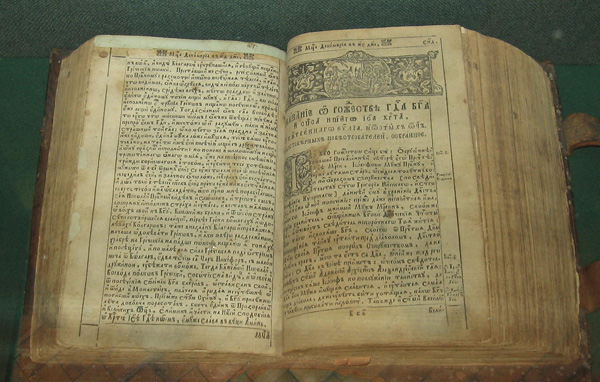|
Jacob The Monk (Lebanon)
Jacob the Monk was a 6th-century monk who was an important early figure in European Christianity. He is known from menologia and synaxaria of the Church of Constantinople, where he is mentioned for October 9 or 10.Pummer, Reinhard (2002). The Life of Jacob the Monk. In ''Early Christian Authors on Samaritans and Samaritanism: Texts, Translations and Commentary.'' Mohr Siebeck, A Syriac manuscript is held by the British Museum The British Museum is a public museum dedicated to human history, art and culture located in the Bloomsbury area of London. Its permanent collection of eight million works is among the largest and most comprehensive in existence. It docume ....Wright, William (1872). ''Catalogue of Syriac manuscripts in the British Museum acquired since the year 1838, Volume 3.'' Gorgias Press References 6th-century Christian monks {{Christian-bio-stub ... [...More Info...] [...Related Items...] OR: [Wikipedia] [Google] [Baidu] |
Menologia
Menologium (), also written menology, and menologe, is a service-book used in the Eastern Orthodox Church and those Eastern Catholic Churches which follow the Byzantine Rite. From its derivation from Greek , ''menológion'', from μήν ''mén'' "a month", via Latin ''menologium'', the literal meaning is "month-set"—in other words, a book arranged according to the months. Like a good many other liturgical terms (e.g., lectionary), the word has been used in several quite distinct senses. Definitions ''Menologion'' has several different meanings: * "Menologion" is not infrequently used as synonymous with "Menaion" (pl. ''Menaia''). The Menaia, usually in twelve volumes—one for each month—but sometimes bound in three, form an office-book, which in the Orthodox Church, corresponds roughly to the '' Proprium Sanctorum'' of the Latin Breviary. They include all the propers (variable parts) of the services connected with the commemoration of saints and in particular the cano ... [...More Info...] [...Related Items...] OR: [Wikipedia] [Google] [Baidu] |
Synaxaria
Synaxarion or Synexarion (plurals Synaxaria, Synexaria; el, Συναξάριον, from συνάγειν, ''synagein'', "to bring together"; cf. etymology of ''synaxis'' and '' synagogue''; Latin: ''Synaxarium'', ''Synexarium''; cop, ⲥⲩⲛⲁⲝⲁⲣⲓⲟⲛ; ar, ٱلسِّنْكِسَارُ/ٱلسَّنْكِسَارُ/ٱلسِّنَكْسَارُ, translit=As-sinkisār/As-sankisār/As-sinaksār) is the name given in the Eastern Orthodox, Oriental Orthodox and Eastern Catholic Churches to a compilation of hagiographies corresponding roughly to the martyrology of the Roman Church. There are two kinds of synaxaria: *Simple synaxaria: lists of the saints arranged in the order of their anniversaries, e.g. the calendar of Morcelli *Historical synaxaria: including biographical notices, e.g. the Menologion of Basil II and the synaxarium of Sirmond. The notices given in the historical synaxaria are summaries of those in the great menologies, or collections of lives of saints, ... [...More Info...] [...Related Items...] OR: [Wikipedia] [Google] [Baidu] |
Church Of Constantinople
The Ecumenical Patriarchate of Constantinople ( el, Οἰκουμενικὸν Πατριαρχεῖον Κωνσταντινουπόλεως, translit=Oikoumenikón Patriarkhíon Konstantinoupóleos, ; la, Patriarchatus Oecumenicus Constantinopolitanus; tr, Rum Ortodoks Patrikhanesi, İstanbul Ekümenik Patrikhanesi, "Roman Orthodox Patriarchate, Ecumenical Patriarchate") is one of the fifteen to seventeen autocephalous churches (or "jurisdictions") that together compose the Eastern Orthodox Church. It is headed by the Ecumenical Patriarch of Constantinople, currently Bartholomew, Archbishop of Constantinople. Because of its historical location as the capital of the former Eastern Roman (Byzantine) Empire and its role as the mother church of most modern Orthodox churches, Constantinople holds a special place of honor within Orthodoxy and serves as the seat for the Ecumenical Patriarch, who enjoys the status of ''primus inter pares'' (first among equals) among the world ... [...More Info...] [...Related Items...] OR: [Wikipedia] [Google] [Baidu] |
Syriac Language
The Syriac language (; syc, / '), also known as Syriac Aramaic (''Syrian Aramaic'', ''Syro-Aramaic'') and Classical Syriac ܠܫܢܐ ܥܬܝܩܐ (in its literary and liturgical form), is an Aramaic language, Aramaic dialect that emerged during the first century AD from a local Aramaic dialect that was spoken by Arameans in the ancient Aramean kingdom of Osroene, centered in the city of Edessa. During the Early Christian period, it became the main literary language of various Aramaic-speaking Christian communities in the historical region of Syria (region), Ancient Syria and throughout the Near East. As a liturgical language of Syriac Christianity, it gained a prominent role among Eastern Christian communities that used both Eastern Syriac Rite, Eastern Syriac and Western Syriac Rite, Western Syriac rites. Following the spread of Syriac Christianity, it also became a liturgical language of eastern Christian communities as far as India (East Syriac ecclesiastical province), India ... [...More Info...] [...Related Items...] OR: [Wikipedia] [Google] [Baidu] |
British Museum
The British Museum is a public museum dedicated to human history, art and culture located in the Bloomsbury area of London. Its permanent collection of eight million works is among the largest and most comprehensive in existence. It documents the story of human culture from its beginnings to the present.Among the national museums in London, sculpture and decorative and applied art are in the Victoria and Albert Museum; the British Museum houses earlier art, non-Western art, prints and drawings. The National Gallery holds the national collection of Western European art to about 1900, while art of the 20th century on is at Tate Modern. Tate Britain holds British Art from 1500 onwards. Books, manuscripts and many works on paper are in the British Library. There are significant overlaps between the coverage of the various collections. The British Museum was the first public national museum to cover all fields of knowledge. The museum was established in 1753, largely ... [...More Info...] [...Related Items...] OR: [Wikipedia] [Google] [Baidu] |



